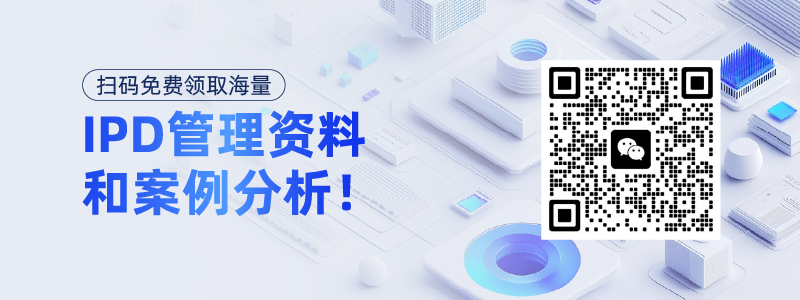Selecting the right IPD (Integrated Product Development) project management platform is a crucial decision for enterprises aiming to streamline their product development processes, enhance collaboration, and drive innovation. An effective IPD project management platform serves as the backbone of an organization's product development ecosystem, enabling seamless communication, efficient resource allocation, and real-time visibility into project progress. However, with a plethora of options available in the market, choosing the most suitable platform can be a daunting task. This article will delve into the key selection criteria for an IPD project management platform, focusing on the essential elements of enterprise-level system design.
The IPD approach emphasizes cross-functional collaboration, concurrent engineering, and a structured product development process. A well-designed IPD project management platform should support these principles by providing tools and features that facilitate communication and collaboration among different teams, such as product management, engineering, marketing, and sales. It should also enable the efficient management of project schedules, resources, and risks, ensuring that products are developed on time, within budget, and meet the desired quality standards.
Moreover, an enterprise-level IPD project management platform should be scalable and flexible to accommodate the changing needs of the organization. As the business grows and evolves, the platform should be able to handle increased project volumes, additional users, and new functional requirements. It should also integrate seamlessly with other enterprise systems, such as ERP (Enterprise Resource Planning) and CRM (Customer Relationship Management), to ensure a smooth flow of information across the organization.
Functionality and Features
One of the primary considerations when selecting an IPD project management platform is its functionality and features. The platform should offer a comprehensive set of tools to support the entire product development lifecycle, from idea generation to product launch. This includes features such as project planning and scheduling, resource management, task assignment and tracking, document management, and collaboration tools.
Project planning and scheduling features should allow users to create detailed project plans, set milestones, and allocate resources. The platform should also provide real-time visibility into project progress, enabling managers to track the status of tasks, identify potential bottlenecks, and make informed decisions. Resource management tools should help users manage and allocate resources effectively, ensuring that projects have the necessary resources to meet their deadlines.
Task assignment and tracking features should enable users to assign tasks to team members, set deadlines, and track progress. The platform should provide notifications and alerts to keep team members informed about their tasks and deadlines, and allow managers to monitor the progress of tasks and take corrective action if necessary. Document management features should allow users to store, organize, and share project documents, ensuring that all team members have access to the latest information.
Collaboration tools are essential for effective IPD project management. The platform should provide features such as discussion forums, chat rooms, and video conferencing to facilitate communication and collaboration among team members. These tools should enable real-time communication, file sharing, and collaboration on documents, ensuring that team members can work together effectively regardless of their location.
Scalability and Flexibility
Another important consideration when selecting an IPD project management platform is its scalability and flexibility. The platform should be able to accommodate the growing needs of the organization as it expands and evolves. This includes the ability to handle increased project volumes, additional users, and new functional requirements.
Scalability refers to the platform's ability to handle a large number of users, projects, and data without sacrificing performance. The platform should be able to scale horizontally by adding more servers or vertically by increasing the resources of existing servers. It should also be able to handle high levels of concurrent usage without experiencing slowdowns or outages.
Flexibility refers to the platform's ability to adapt to the changing needs of the organization. The platform should be customizable to meet the specific requirements of the organization, such as workflow customization, reporting customization, and integration with other enterprise systems. It should also be able to support different project management methodologies, such as Agile, Waterfall, or Hybrid.
In addition, the platform should be able to integrate seamlessly with other enterprise systems, such as ERP, CRM, and PLM (Product Lifecycle Management). This integration should enable the flow of information across different systems, ensuring that all stakeholders have access to the latest information. It should also eliminate the need for manual data entry and reduce the risk of errors.
User Experience and Usability
The user experience and usability of an IPD project management platform are also important considerations. The platform should be easy to use and navigate, with a intuitive interface that requires minimal training. It should also provide users with the tools and features they need to perform their tasks effectively, without overwhelming them with unnecessary complexity.
The user interface should be designed to be visually appealing and easy to understand. It should use clear and concise language, and provide users with visual cues and feedback to help them navigate the platform. The platform should also be accessible from different devices, such as desktops, laptops, tablets, and smartphones, ensuring that users can access it from anywhere at any time.
In addition, the platform should provide users with the ability to customize their user experience. This includes the ability to personalize the interface, set preferences, and create custom reports. The platform should also provide users with the ability to save and reuse templates, reducing the time and effort required to create new projects.
Finally, the platform should provide users with comprehensive training and support. This includes online documentation, video tutorials, and user forums, as well as access to a dedicated support team. The support team should be available to answer questions, provide assistance, and resolve issues in a timely manner.

Security and Data Privacy
Security and data privacy are critical considerations when selecting an IPD project management platform. The platform should protect the organization's sensitive data from unauthorized access, use, and disclosure. It should also comply with relevant data protection regulations, such as GDPR (General Data Protection Regulation) and CCPA (California Consumer Privacy Act).
The platform should use industry-standard security measures, such as encryption, access controls, and authentication, to protect the organization's data. It should also provide users with the ability to manage their own security settings, such as setting passwords and permissions. The platform should also provide users with the ability to audit and monitor access to their data, ensuring that only authorized users have access to sensitive information.
In addition, the platform should comply with relevant data protection regulations. This includes ensuring that the organization's data is collected, used, and stored in accordance with the regulations. The platform should also provide users with the ability to exercise their data rights, such as the right to access, rectify, and erase their data.
Finally, the platform should provide users with the ability to backup and restore their data. This ensures that in the event of a data loss or corruption, the organization's data can be recovered quickly and easily. The platform should also provide users with the ability to monitor the integrity of their data, ensuring that it is accurate and complete.
Integration and Compatibility
Integration and compatibility are important considerations when selecting an IPD project management platform. The platform should be able to integrate seamlessly with other enterprise systems, such as ERP, CRM, and PLM. This integration should enable the flow of information across different systems, ensuring that all stakeholders have access to the latest information.
The platform should provide users with the ability to integrate with other enterprise systems using standard APIs (Application Programming Interfaces). This allows the organization to connect the platform to other systems without having to develop custom integrations. The platform should also support popular integration protocols, such as REST (Representational State Transfer) and SOAP (Simple Object Access Protocol).
In addition, the platform should be compatible with different operating systems, browsers, and devices. This ensures that users can access the platform from anywhere at any time, using the device of their choice. The platform should also be compatible with different versions of Microsoft Office, ensuring that users can easily import and export documents.
Finally, the platform should provide users with the ability to integrate with third-party tools and services, such as email marketing tools, project management tools, and collaboration tools. This allows the organization to extend the functionality of the platform and integrate it with other tools and services that they already use.
Cost and Return on Investment
Cost and return on investment (ROI) are important considerations when selecting an IPD project management platform. The platform should provide the organization with a positive ROI by improving productivity, reducing costs, and increasing innovation. The cost of the platform should also be reasonable and within the organization's budget.
The cost of the platform typically includes software licensing fees, implementation costs, training costs, and ongoing maintenance and support costs. The organization should carefully evaluate these costs and compare them to the benefits that the platform will provide. The organization should also consider the total cost of ownership (TCO) of the platform, which includes all of the costs associated with the platform over its entire lifecycle.
In addition to the cost of the platform, the organization should also consider the ROI that it will provide. The platform should improve productivity by streamlining processes, reducing manual tasks, and providing real-time visibility into project progress. It should also reduce costs by eliminating duplicate work, improving resource utilization, and reducing the risk of errors. Finally, the platform should increase innovation by enabling cross-functional collaboration, facilitating the sharing of ideas, and providing tools and features that support innovation.
The organization should also consider the long-term benefits of the platform. The platform should be able to adapt to the changing needs of the organization and provide value over the long term. The organization should also consider the impact that the platform will have on the organization's culture and processes. The platform should be able to support the organization's strategic goals and help it achieve its business objectives.
Conclusion
Selecting the right IPD project management platform is a critical decision for enterprises aiming to improve their product development processes, enhance collaboration, and drive innovation. The platform should provide a comprehensive set of tools and features to support the entire product development lifecycle, be scalable and flexible to accommodate the changing needs of the organization, offer a positive user experience and usability, ensure security and data privacy, integrate seamlessly with other enterprise systems, and provide a positive ROI.
By carefully evaluating the key selection criteria outlined in this article, enterprises can make an informed decision and choose the IPD project management platform that best meets their needs. The right platform can help enterprises streamline their product development processes, improve productivity, reduce costs, and increase innovation, ultimately leading to a competitive advantage in the market.
ARTICLE TITLE :IPD project management platform selection criteria: key points of enterprise-level system design! ,AUTHOR :ITpmlib

















